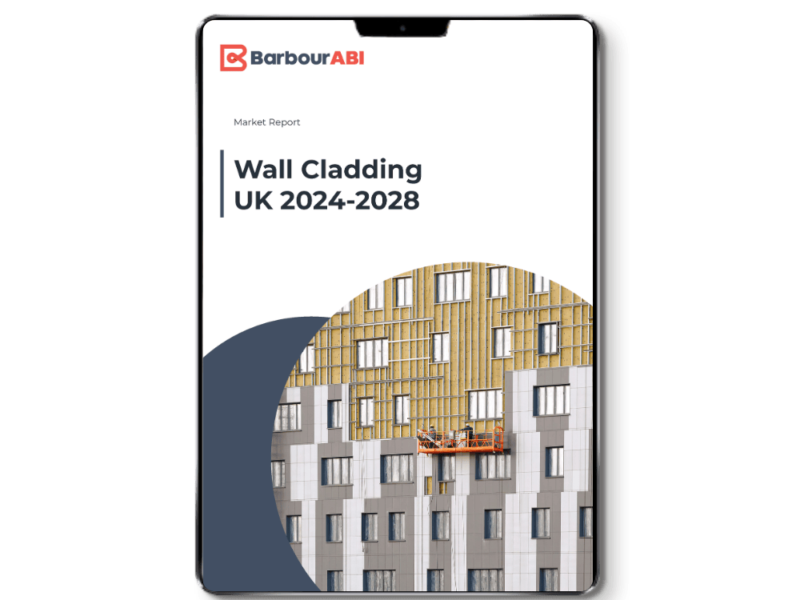New Market Research Report Unveils Insights into the UK Wall Cladding Market

Barbour ABI – part of Barbour ABI Ltd announce the release of its 13th Edition of The Wall Cladding Market – UK 2024-2028. This in-depth analysis provides key insights and data, highlighting market trends, challenges, and opportunities, making it an essential resource for trade associations, manufacturers, suppliers, and other industry stakeholders.
The UK wall cladding market, estimated at approximately 48.7 million m² of installed area in 2023, has seen significant changes over recent years. The report outlines market developments including:
Market Trends and Historical Performance
The market experienced a sharp decline of 11% in 2020 due to the onset of the Covid-19 pandemic, severely impacting new housebuilding and non-residential construction.
In 2021, the market rebounded strongly as construction sites reopened, and there was a surge in home improvement activities despite ongoing supply chain challenges.
2022 saw continued growth driven by non-residential projects such as industrial warehousing and steady residential housebuilding supported by government initiatives.
Current Market Conditions and Forecasts
However, in 2023, the market saw a slight decline of 2%, influenced by an uncertain economic climate and issues like raw material shortages and a lack of skilled labour.
A further decline of 1% is anticipated in 2024, with demand primarily driven by refurbishment and home improvement activities in both residential and non-residential sectors.
Product Segmentation and Market Share
Facing bricks dominate the market with a 66% share by area installed, followed by rainscreen cladding, and EWI & renders. The remainder includes products like cast stone panels, curtain walls, structural glazing, and timber cladding.
The report provides a detailed analysis of each segment, highlighting their growth and market dynamics.
Challenges and Sector Insights
The report identifies several challenges facing the UK wall cladding market in 2024, including declining new construction orders, increasing competition, high production costs, and changing regulations.
It also covers sector-specific insights, such as the residential sector’s ongoing demand for sustainable cladding solutions and the non-residential sector’s growth in infrastructure and industrial projects.
Impact of Regulations and Sustainability Trends
New regulations following the Grenfell Tower disaster have significantly impacted the wall cladding industry, with increased emphasis on safety and sustainability.
The report highlights the industry’s shift towards products with a lower environmental impact and the adoption of modern methods of construction (MMC) and offsite production, which are reshaping market demand.
Industry Dynamics and Leading Companies
The report also profiles key players in the market, including Ibstock, Forterra, Wienerberger, Vivalda Group Plc, Taylor Maxwell, and others. It explores their market strategies, product innovations, and the competitive landscape.
Recent Posts
- Key Trends and Market Dynamics in the UK Bricks, Blocks & Precast Concrete Sector
- Navigating Market Volatility: The Future of the UK Kitchen and Bathroom Distributors
- UK Kitchen and Bathroom Distribution: Growth, Challenges, and Opportunities
- Diesel Dominance and the Rise of Green Alternatives in the UK Generator Market
- From Diesel to Hybrid: Barbour ABI Maps UK Generator Hire Market Evolution



